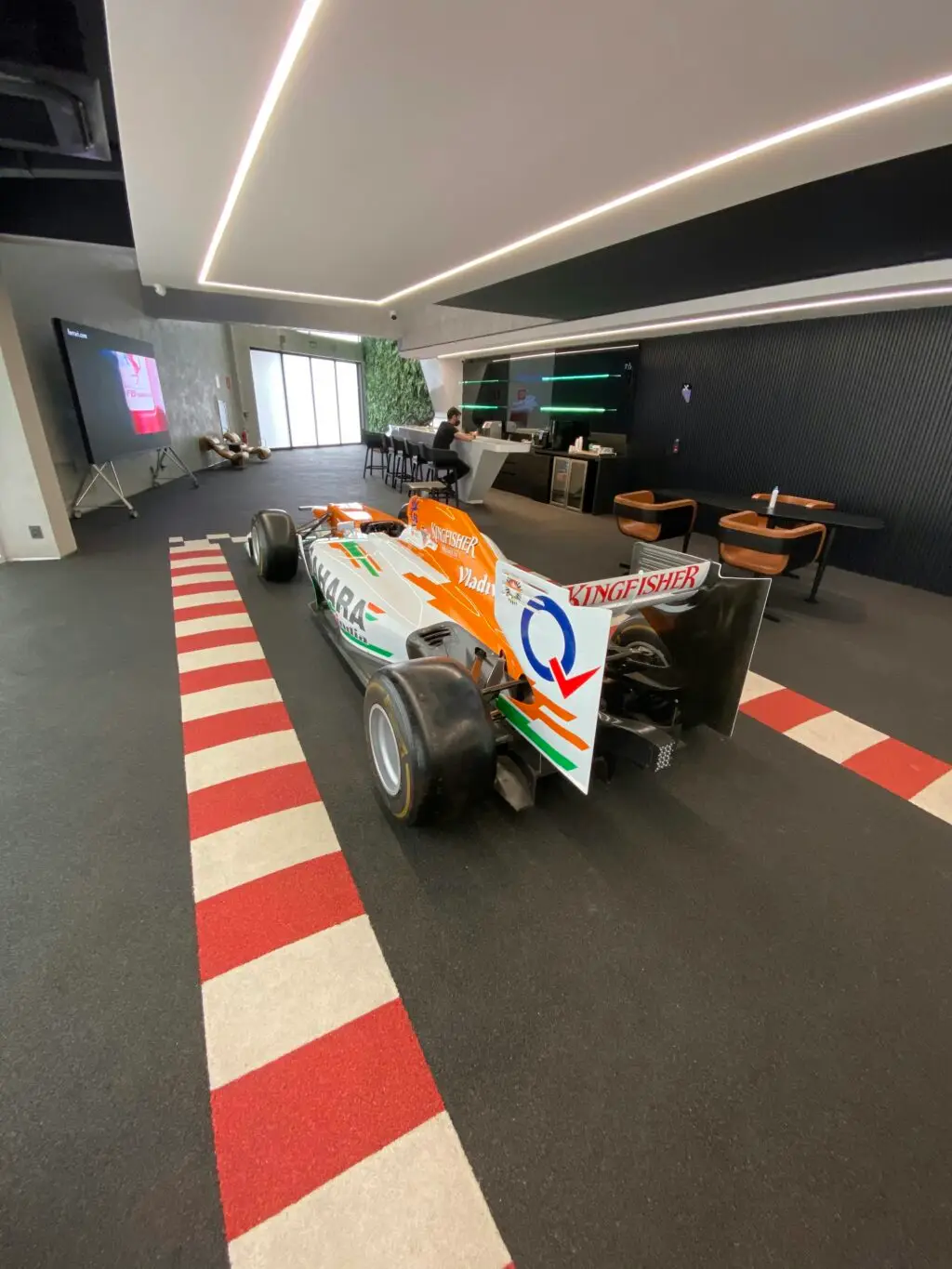

The Daily Routine: Balancing Training and Personal Life
Formula 1 drivers maintain a meticulously structured daily routine that allows them to optimize their performance while balancing personal commitments. The day often begins early, with drivers engaging in morning workouts tailored to enhance their physical fitness and mental acuity. These sessions can include cardiovascular exercises, strength training, and flexibility work, designed to improve strength, stamina, and focus—essential attributes for anyone competing at such high speeds.
Following their workouts, drivers often participate in practice sessions, which are crucial for familiarizing themselves with the car’s setup and the racing circuit. These sessions are not merely about driving laps; they also involve working closely with engineers and technicians to analyze performance data, which contributes to strategic adjustments. The blend of physical training and practice on the track ensures drivers are thoroughly prepared once race day arrives.
In addition to their fitness and practice commitments, F1 drivers also prioritize their personal lives. This aspect is integral, as maintaining a balance helps them to manage the intense pressures of racing. Family time is often scheduled around training and travel commitments, allowing drivers to cultivate relationships outside the demanding environment of motorsport. Despite tight schedules, many drivers find ways to engage in hobbies or interests that help alleviate stress. Whether it’s a quiet dinner with family or engaging in a leisure activity, these moments contribute to their overall well-being.
Travel is a constant factor in an F1 driver’s life, as races are held globally. This necessitates adaptability in their routines to ensure they maintain fitness and performance even away from home. A disciplined approach to managing time, whether at the track or traveling, is essential for drivers, influencing not only their physical preparedness but also their mental resilience and focus when it matters most. Such a well-rounded approach underscores the commitment required to harness peak performance in Formula 1.
Physical Fitness: Tailored Training Programs
The lifestyle of a Formula 1 driver demands an extraordinary level of physical fitness, meticulously cultivated through tailored training programs. These programs are not only designed to enhance the driver’s strength but also to improve cardiovascular health and overall endurance, which are crucial for performing at high levels during races. A comprehensive fitness regimen typically includes a blend of strength training, cardiovascular exercises, and targeted endurance workouts to meet the specific demands of high-speed racing.
Strength training is essential for F1 drivers as it builds the key muscle groups required to control the car, particularly during high G-force corners. Core strength, for instance, plays a pivotal role in maintaining stability and balance while navigating through tight turns at speeds exceeding 200 mph. A well-defined core enhances a driver’s ability to manage the physical stress encountered in the cockpit, providing them with the ability to react instinctively to sudden changes on the track.
In addition to strength, cardiovascular fitness is vital for sustaining high levels of performance throughout the race duration. Drivers often engage in various cardiovascular exercises such as cycling, running, or swimming to improve their heart and lung capacity, allowing them to endure the physical strain experienced during a race. Furthermore, endurance workouts help develop stamina, enabling drivers to maintain their focus and reaction times even in the later stages of a race when fatigue tends to set in.
Nutrition is another critical component of sustaining physical fitness for Formula 1 drivers. A carefully designed diet plan fuels their bodies with the right nutrients to optimize performance. This includes a balance of carbohydrates for energy, proteins for muscle repair, and healthy fats to aid in recovery. Hydration also plays an essential role in maintaining peak physical condition, particularly due to the intense heat experienced in the cockpit during races. Ultimately, the tailored training programs of F1 drivers are meticulously engineered to ensure they perform at their best both on and off the track.
Mental Discipline: Strategies for Concentration and Focus
The role of mental discipline in the life of a Formula 1 (F1) driver cannot be overstated. The demands of high-speed racing require not just physical prowess but also unparalleled concentration and mental resilience. F1 drivers employ various strategies to sharpen their focus and enhance their performance under pressure.
One prevalent technique is visualization. Before heading out onto the track, drivers often engage in mental rehearsals of their laps. By imagining the circuit meticulously, including braking points, apexes, and optimal acceleration zones, they create a mental blueprint that aids in decision-making during the race. This practice also helps in managing pre-race anxiety, allowing drivers to enter a state of calm readiness.
Meditation is another essential tool in the mental discipline arsenal. By dedicating time to mindfulness practices, F1 drivers develop the ability to concentrate amid distractions. Techniques such as breathing exercises and guided meditations help in centering thoughts and emotions, which is crucial when faced with the cacophony of a bustling pit lane or the intense pressure of competition.
Furthermore, mental resilience is vital in an environment where split-second decisions can make or break a race. Drivers must develop coping mechanisms for stress and setbacks, whether due to mechanical issues or racing incidents. This resilience not only ensures they can recover from challenges but also maintains their focus on long-term performance goals.
Lastly, teamwork plays an integral role in mental discipline. Effective communication with engineers and pit crews allows drivers to remain focused during races. When drivers trust their team, they can concentrate on the task at hand, relying on engineers for vital information and strategies. In summary, through visualization, meditation, resilience-building, and teamwork, F1 drivers cultivate the mental discipline essential for their success on and off the track.
The Mindset of a Champion: Overcoming Challenges and Staying Motivated
The life of a Formula 1 driver is fraught with challenges that require a uniquely resilient mindset. The competition is relentless, as each season brings a new array of skilled opponents vying for the same coveted title. Drivers must not only confront the physical demands of high-speed racing but also navigate the intense pressure that comes from public scrutiny and media attention. To succeed in this environment, a champion must cultivate a mindset that fosters motivation and perseverance.
One of the critical aspects of maintaining a champion’s mindset is the ability to set clear and achievable goals. Successful drivers often break larger objectives into smaller, manageable milestones. This strategy allows them to focus on continuous improvement, adapting their techniques and skills as they advance through their careers. By maintaining a growth-oriented approach, these athletes remain motivated even when faced with setbacks or slower-than-expected progress. Each challenge can be perceived as an opportunity for learning and personal growth, which reinforces their commitment to excellence.
Moreover, the influence of mentors and role models cannot be overstated in shaping a driver’s mindset. Many successful F1 drivers recount the importance of guidance received from seasoned professionals early in their careers. These mentors impart knowledge, wisdom, and encouragement, instilling a sense of discipline and focus that is crucial for thriving in a demanding sport. Drivers often lean on their experiences with these role models, drawing inspiration during tough times and motivating themselves to rise above adversity.
Ultimately, the mindset of a champion in Formula 1 is characterized by resilience, adaptability, and an unwavering passion for the sport. By confronting challenges head-on and staying motivated through goal-setting and mentorship, these athletes exemplify what it means to embody the spirit of a true competitor.


